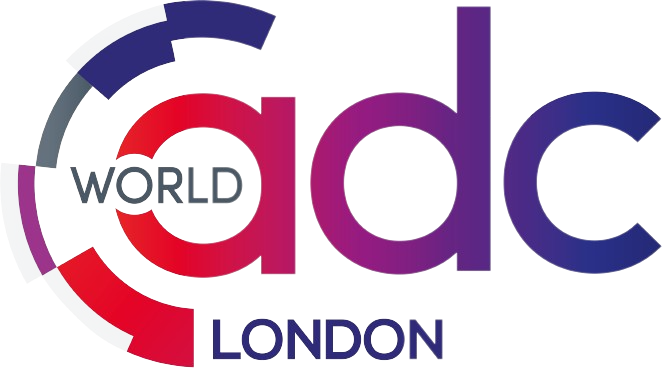Conference Day One
Wednesday 13th March 2024
7:20 am Check-In & Coffee
8:20 am Chair’s Opening Remarks
2023 Triumphs & Milestones: A Showcase of the Thrilling Success of ADC Therapies
8:30 am ENHERTU: One Year On – Reflecting on Success, Optimising Strategies & Revisiting the ADC ‘Poster Child’ Case
Synopsis
- Evaluating the remarkable progress of ENHERTU following its unprecedented triumph in HER-2 negative breast cancer and looking into broadening out applications in a pan-tumour study
- Analysing the distinctive characteristics of ENHERTU that contributed to its triumph, including the low potency payload, linker cleavability, and bystander effect – identifying which aspects can pave the way for future ADC advancements
- Pondering the significance of ENHERTU’s success in shaping the future of ADC design and the potential for repurposing approved ADCs in novel therapeutic indications
9:00 am Accelerating Bioconjugate Development from Discovery to Commercialization With WuXi XDC’s Fully Integrated Capabilities and Expanding Capacities
Synopsis
- Showcasing a one-stop discovery services platform to accelerate candidate selection, including mab/protein generation, payload linker synthesis, conjugate generation and in vitro, in vivo characterisation
- Demonstrating fully integrated ADC CMC development with industry leading DNA to IND timeline of 13-15 months; mAb/payloadlinker/conjugation DS & DP development and manufacturing all by in-house team and facilities
- Sharing insight into the rapidly expanding capacities for all ADC component manufacturing: to have five conjugation, four ADC DP facilities by mid-2026 in Wuxi city and Singapore, as well as global network of mab facilities and multiple linker-payload facilities
9:30 am Delving into SGN-CEACAM5C, an ADC With Novel TOP1 Drug Linker With Outstanding Preclinical Activity
Synopsis
- SGN-CEACAM5C is an ADC with a potent topoisomerase I payload with distinct properties
- SGN-CEACAM5C has outstanding preclinical activity
10:00 am Morning Refreshments & Speed Networking
Synopsis
This session is the ideal opportunity to introduce yourself to the attendees that you would like to have more in-depth conversations with. Utilise this dedicated networking time for face-to-face interactions with many of the brightest minds working in the ADC field to form meaningful business relationships, and swap business cards using our app.
11:00 am
Discovery Chemistry
Chair: Jamie Baker, Professor of Chemistry, University College London
Unveiling the Power Within: Exploring Payloads in ADC Discovery for Enhanced Therapeutic Potential
Download the Full Event Guide for full details
11:00 Revitalising the Innate Agonist Approach: Exploring the Essential Elements for a Renaissance Era
Shelley Ackerman, Director & Program Team Lead, Bolt Biotherapeutics
11:30 ThioBridge® - a Tool for the Design, Optimization & Manufacture of ADCs
Richard Spears, Principal Scientist, Abzena
12:00 Exploring Novel Mechanisms for Release of Different Payloads From ADCs & SMDCs: Discovery & Translational Aspects
Hans-Georg Lerchen, Chief Scientific Officer, Vincerx Biotech
12:30 RenBiologics is at the forefront of advancing bispecific ADCs and nanobody ADCs.
Yi (Benny) Yang, Chief Scientific Officer, Biocytogen Pharmaceuticals (Beijing)
1:00 pm Lunch & Learn with PROVEO
Discovery Chemistry
Unveiling the Significance of Site-Specific Conjugation & A Novel Approach to Achieving Synthesis In Vivo
Download the Full Event Guide for full details
2:00 Biochemical Innovations for Expanding The Therapeutics Index of ADCs
Christine Koehler, Head, Antibody Engineering, Veraxa Biotech
2:30 Discovery of A Novel Auristatin Antibody Drug Conjugate Drug Linker With Equal Efficacy & Reduced Bone Marrow Toxicity Compared to Vedotin
Noah Bindman, Principal Scientist, Pfizer
3:00 Looking into the Use Of “Click” Chemistry & Native Disulfide Rebridging to Make Bispecifics, Multispecifics & “Synthetic” Antibodies (Synabs)
Vijay Chudasama, Professor, University College London
3:30 pm Technology Slam & Afternoon Networking Break
Synopsis
As you enjoy your afternoon refreshments, you will also have the chance to be face-to-face with the field’s most innovative and exciting technology providers. Join our dedicated technology slam to identify your next technology provider and progress your antibody-drug conjugate pipeline smoothly and efficiently
Highlighting ADCs as The Next Go-To Pan-Oncological Treatment: Looking Beyond Existing Targets Like HER2 to Expand ADC Applications
4:30 pm Moving target: The Interplay Between ADC Design & Target Selection
Synopsis
- Assessing FDA-approved ADCs and what they teach us about ADC target selection
- Examining the importance of matching the right technology and target to enable clinical success, using HER2 and TROP2 as example
- Discussing how payload selection and biomarkers of sensitivity or resistance can influence criteria for ADC target selection
5:00 pm Our History to Serve the Innovators: A Step Ahead Against the Challenges of the Bioconjugates
Synopsis
- Discover the insides of a sustainable business model
- Learn about expertise, technology and integration of services
- Discuss capacity shortage challenges: what it means going forward
5:30 pm ABBV-400 – A c-Met Targeting ADC With Activity in CRC & MET Amplified Tumours
Synopsis
- Exploring the background of ABBV-400
- Analysing the safety profile of ABBV-400 and forward planning for tox-related concerns
- Highlighting the efficacy of this promising ADC and how it can provide hope for the treatment of MET amplified tumours
- Discussing future directions and considerations for optimization
6:00 pm Demonstrating technical excellence in ADCs from preclinical development to commercial manufacturing
Synopsis
- Explore the integrated offer of mAb, drug-linker and conjugation expertise at Merck Life Science Services
- Overcome key challenges through simplified process and analytical platforms developed specifically for bioconjugates
- Experience right first time delivery: seamless transfers from process understanding to GMP production
6:30 pm Chair’s Closing Remarks
6:35 pm Scientific Poster Session & Drinks Reception
Synopsis
Join your peers in the ADC field by presenting your work in our dedicated ADC poster session. This is the perfect opportunity to discuss, debate, and display your work in the field, while enjoying a drink of your choice at our dedicated drinks reception.
